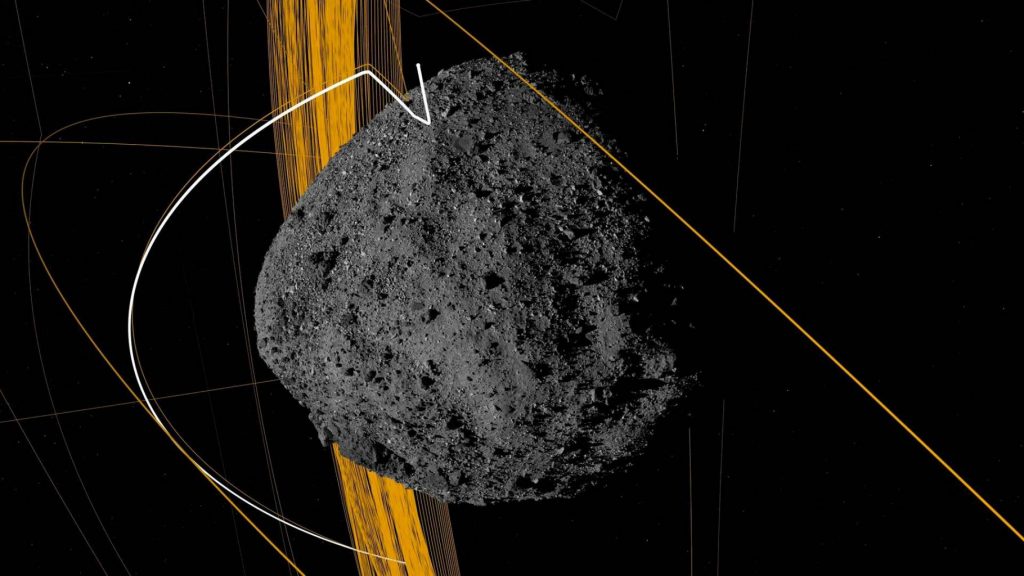The asteroid Bennu, which has a diameter of 500 meters and is one of the main known space threats, could collide with Earth from the year 2135, although its probability is “extremely small”.
NASA’s OSIRIS-REx mission was able to predict the trajectory of Bennu over the next few centuries, with an accuracy of two meters, and estimated that in the year 2135 the asteroid will pass closer to Earth than the moon itself.
From that moment on, the space rock could pass through a “gravitational key hole” that would change its trajectory and take it straight toward Earth.
A gravitational keyhole is a region of space in which a planet’s gravity changes the asteroid’s orbit. And according to NASA models, there are very few “eyes” that humans have to pay attention to.
“We have to keep in mind that, in general, the potential for an effect is really small,” David Farnocchia, the study’s lead author, explained during a conference.
NASA’s Center for Near-Earth Object Studies announced a press conference Wednesday to announce a “significant discovery” whose effects will not be noticeable for more than a century.
In fact, NASA has increased the odds of a frightening collision, although they are still very small: between now and 2300, the chance of Bennu hitting Earth is 1 in 1750, by 0.057%.
The maximum danger point in one day will be September 24, 2182, with a probability of 0.037%.
Farnocchia, who believes that although Bennu will ignore most other “eyes”, this possibility still exists: “Now we only have gravitational key holes over a kilometer long that we should consider.”
Despite the low odds of a collision, NASA has announced the DART mission, in which it intends to design a half-ton ship that can change the course of asteroids when they collide with them or against one of their “moons”.
It must be remembered that the risk from Bennu as a single asteroid is less than from undiscovered objects of similar size. This is why NASA goes to great lengths to detect more than 90% of NEOs larger than 140 meters,”
Protecting the planet appears to represent a new stage in the space race.
A few weeks ago, China planned to launch 23 missiles to deflect the asteroid Bennu, which is now more than 320 million km from Earth.
For its part, the United States launched the OSIRIS-REx mission in 2016 to study Bennu and better understand how asteroids function.
“We’ve never modeled the trajectory of an asteroid with such accuracy,” Varnokia said. EFE

“Proud web fanatic. Subtly charming twitter geek. Reader. Internet trailblazer. Music buff.”

:quality(85)/cloudfront-us-east-1.images.arcpublishing.com/infobae/TEQF6EONZRFGLLLDIDD4L2O4EE.jpg)

:quality(75)/cloudfront-us-east-1.images.arcpublishing.com/elcomercio/XU32LRAEZFDDPNVHLFU3CKVBYY.jpg)



More Stories
How to create 3D videos with my iPhone, it will be very useful even for your business
NASA discovers an anomaly in the Earth’s magnetic field that could have serious consequences for humans
Can the Earth be divided into two parts?